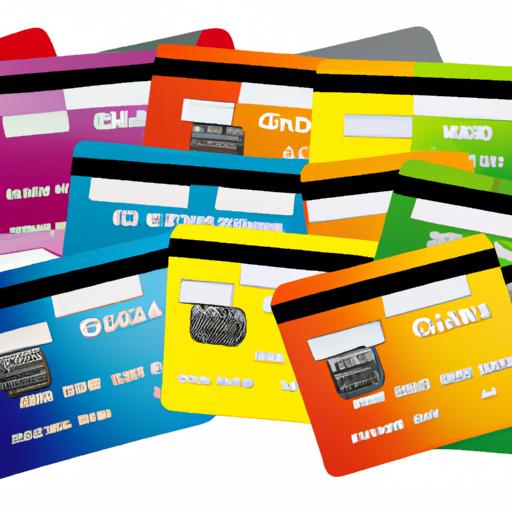Introduction
When it comes to managing your finances effectively, one tool that can help you save money and pay off debt efficiently is a transfer credit card. But what exactly are transfer credit cards, and why is it crucial to find the best one for your needs?
Definition of transfer credit cards
Transfer credit cards are financial products that allow you to transfer existing balances from one or more credit cards to a new card with lower interest rates or promotional offers. By consolidating your debt onto a single card, you can potentially save money on interest payments and simplify your monthly payments.
Importance of finding the best transfer credit card
Choosing the right transfer credit card can make a significant difference in your financial well-being. The best transfer credit card for you will offer competitive introductory APR rates, low balance transfer fees, attractive rewards and benefits, and align with your credit score. By finding the best fit for your financial situation, you can save money on interest, earn rewards, and work towards financial freedom. Let’s explore the factors to consider when selecting the best transfer credit card that meets your needs.
Factors to Consider when Choosing a Transfer Credit Card
Introductory APR Offers
One of the key factors to consider when choosing a transfer credit card is the introductory APR offer. This rate typically applies to balance transfers for a specified period, during which you can benefit from lower or even 0% interest. It’s essential to compare different cards’ introductory APR rates and durations to find the best option for your financial needs.
Balance Transfer Fees
Another crucial consideration is the balance transfer fees associated with the credit card. While some cards offer low or even no balance transfer fees, others may charge a percentage of the transferred amount. Understanding these fees can help you calculate the total cost of transferring your balance and determine the most cost-effective option for you.
Rewards and Benefits
In addition to the financial aspects, it’s essential to look into the rewards and benefits offered by the transfer credit card. Some cards provide cash back, travel rewards, or other perks for using the card for purchases. Consider your spending habits and preferences to choose a card that aligns with your lifestyle and offers rewards that you can benefit from.
Credit Score Requirements
Lastly, be mindful of the credit score requirements for the transfer credit card you’re interested in. Different cards may have varying credit score thresholds, and it’s crucial to ensure that your credit score meets the criteria to qualify for the card you desire. Understanding the credit score requirements can help you narrow down your options and focus on cards that are attainable based on your credit profile.
Top Transfer Credit Cards in the Market
Card A
Features
Card A offers a competitive introductory APR rate, allowing you to save on interest payments when transferring balances. Additionally, this card may come with a generous rewards program, providing you with cashback or travel rewards for your spending.
Pros and Cons
One of the main advantages of Card A is its low balance transfer fees, making it cost-effective to consolidate your debt. However, keep in mind that this card may require a higher credit score for approval, so ensure you meet the eligibility criteria before applying.
Card B
Features
Card B stands out for its extended introductory APR period, giving you more time to pay off your transferred balances without accruing high-interest charges. Furthermore, this card may offer additional perks such as purchase protection and travel insurance.
Pros and Cons
The key benefit of Card B is its comprehensive rewards program, allowing you to earn points on every purchase. On the downside, this card may have slightly higher balance transfer fees compared to other options, so weigh the costs and benefits carefully.
Card C
Features
Card C distinguishes itself with a no annual fee policy, saving you money on maintenance costs. Moreover, this card may provide a variety of redemption options for your rewards points, giving you flexibility in how you use your benefits.
Pros and Cons
One of the advantages of Card C is its lenient credit score requirements, making it accessible to a wider range of applicants. However, be aware that this card may have a shorter introductory APR period, so consider your repayment timeline when choosing this option.
Comparison of the Top Transfer Credit Cards
Introductory APR Rates
When comparing transfer credit cards, one of the key factors to consider is the introductory APR rates offered by each card. These rates can vary widely and can have a significant impact on how much you save on interest charges. Look for cards with low or 0% introductory APR rates for balance transfers, as this can provide you with a valuable opportunity to pay down your debt without accruing additional interest.
Balance Transfer Fees
In addition to the introductory APR rates, it’s essential to consider the balance transfer fees associated with each transfer credit card. Some cards may charge a flat fee or a percentage of the transferred balance, which can add up quickly if you’re transferring a large amount of debt. Look for cards with low or no balance transfer fees to minimize the cost of consolidating your debt onto a new card.
Rewards and Benefits
Beyond the introductory APR rates and balance transfer fees, consider the rewards and benefits offered by each transfer credit card. Some cards may offer cash back, travel rewards, or other perks that can provide additional value for your spending. Evaluate the rewards structure and benefits of each card to determine which one aligns best with your financial goals and lifestyle.
Credit Score Requirements
Lastly, be mindful of the credit score requirements for each transfer credit card. Different cards may have varying minimum credit score thresholds, and your eligibility for certain cards may depend on your credit history. Ensure that you meet the credit score requirements for the cards you’re considering to increase your chances of approval and access to the best transfer credit card for your financial needs.
How to Apply for the Best Transfer Credit Card
Application Process
Applying for a transfer credit card is a straightforward process that can typically be done online or over the phone. To start, you will need to provide personal information such as your name, address, Social Security number, and income details. You may also be asked to choose the amount you wish to transfer from your existing credit cards to the new card. Once you submit your application, the credit card issuer will review your information and credit history to determine your eligibility.
Eligibility Criteria
Before applying for a transfer credit card, it’s essential to review the eligibility criteria set by the credit card issuer. Most transfer credit cards require a good to excellent credit score to qualify for the best offers. Additionally, some cards may have specific requirements, such as a minimum income level or a maximum debt-to-income ratio. Make sure to check the eligibility criteria before applying to increase your chances of approval.
Tips for a Successful Application
To increase your chances of approval for the best transfer credit card, there are a few tips you can follow. Firstly, make sure to review your credit report and credit score before applying to ensure that all information is accurate. Additionally, consider paying down existing debt to improve your debt-to-income ratio and overall creditworthiness. Lastly, be prepared to provide any requested documentation promptly and accurately to expedite the application process. By following these tips, you can maximize your chances of securing the best transfer credit card for your financial needs.
Conclusion
In conclusion, finding the best transfer credit card is a crucial step in managing your finances effectively and saving money on interest payments. By understanding the factors to consider when choosing a transfer credit card, such as introductory APR rates, balance transfer fees, rewards, and credit score requirements, you can make an informed decision that aligns with your financial goals.
Remember, the best transfer credit card for you may not be the same as someone else’s. It’s essential to assess your individual financial situation and priorities to select a card that best suits your needs. By taking the time to research and compare different transfer credit card options, you can find a card that offers the most benefits and savings for your specific circumstances.
So, whether you’re looking to consolidate debt, save money on interest, or earn rewards on your balances, the right transfer credit card can be a valuable tool in your financial toolkit. Choose wisely, and watch as your financial goals become more achievable with the right card by your side.

